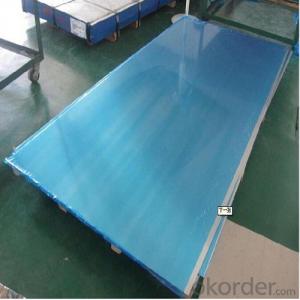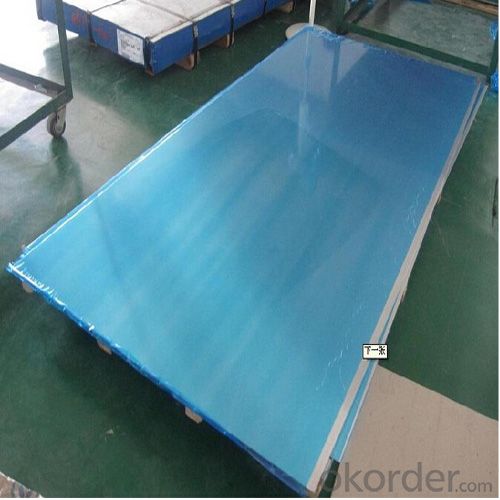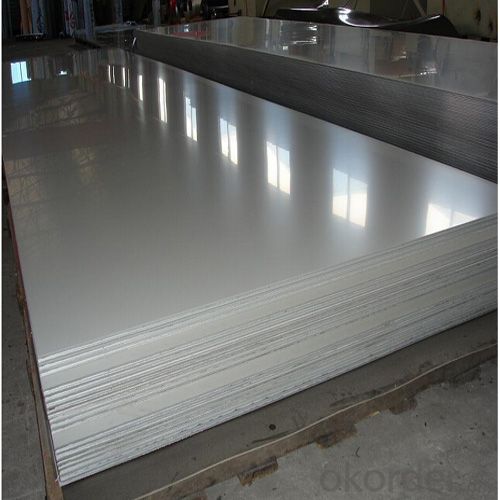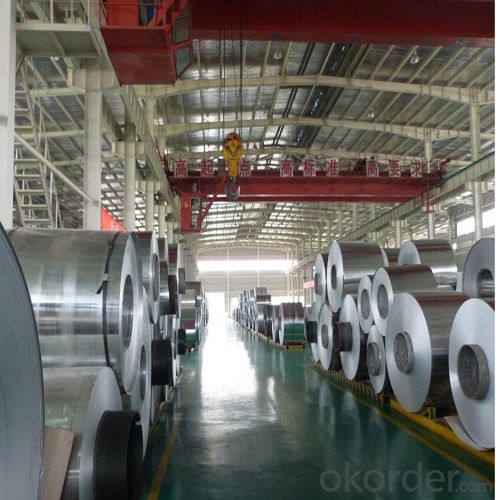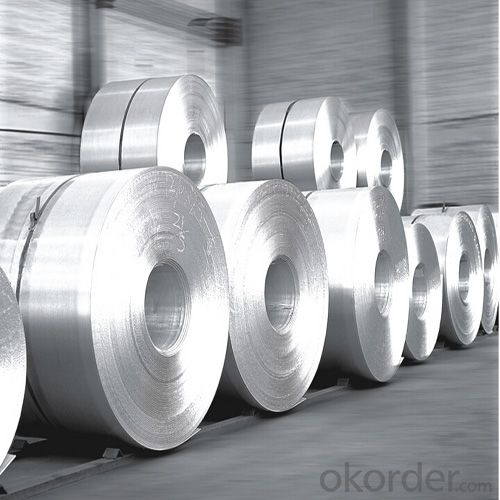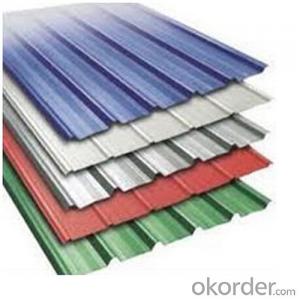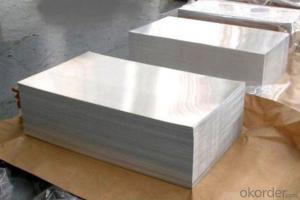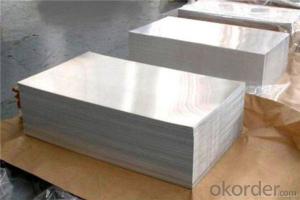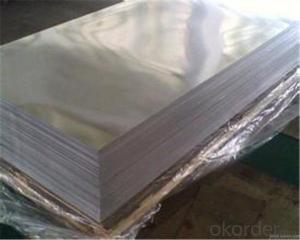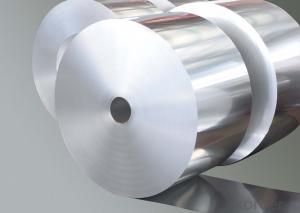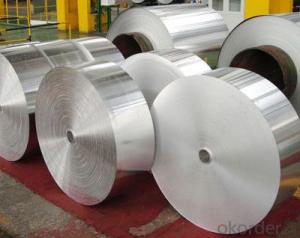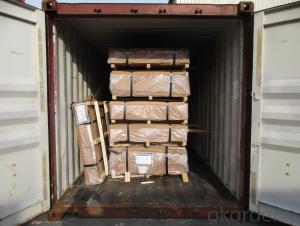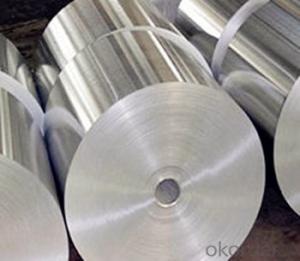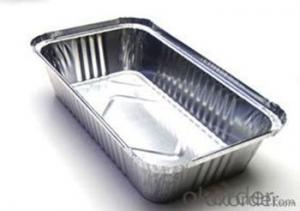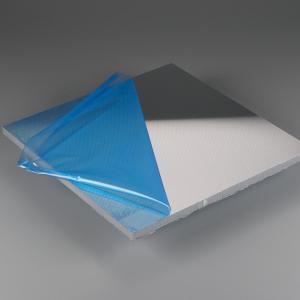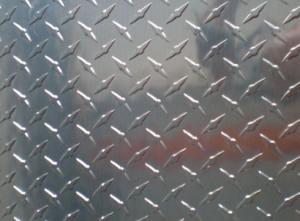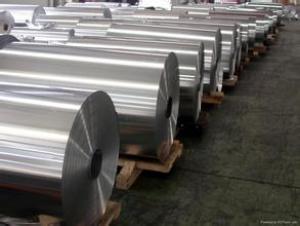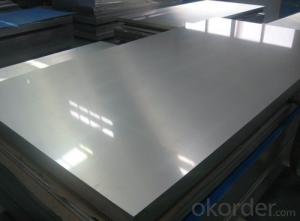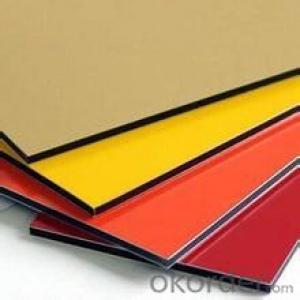Rugged Construction Aluminum Foil Single Sheets with Best Price
- Loading Port:
- Shanghai
- Payment Terms:
- TT OR LC
- Min Order Qty:
- 10 m.t.
- Supply Capability:
- 10000 m.t./month
OKorder Service Pledge
OKorder Financial Service
You Might Also Like
Specification
1.Structure of Rugged Construction Alloy Aluminium Description:
Alloy Aluminium Plate 1200 is widely used in the strength requirements of the product. Products commonly used in signs, billboards, building exterior decoration, bus body, high factory wall decoration, kitchen sink, lamp, fan, electronic components, chemical apparatus, sheet processing, deep drawing or spinning hollow ware, welding parts, heat exchangers, Bell surface and plate, plates, kitchen utensils, accessories, safety equipment and other.
2.Main Features of Rugged Construction Alloy Aluminium:
PVC Protect Film
Waterproof paper
High Quality
Competitive Price
3. Rugged Construction Alloy Aluminium Images:
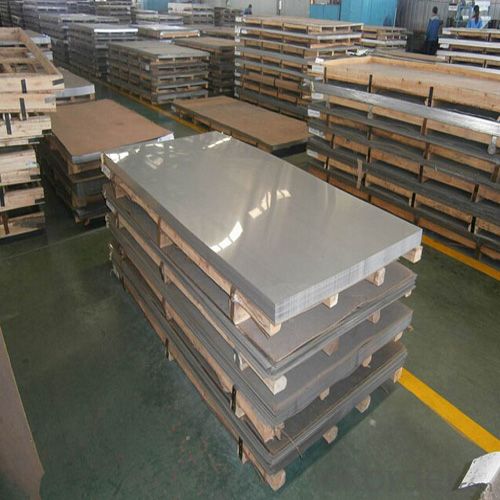
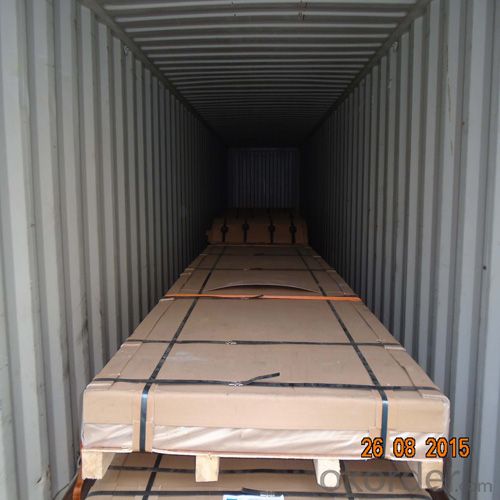
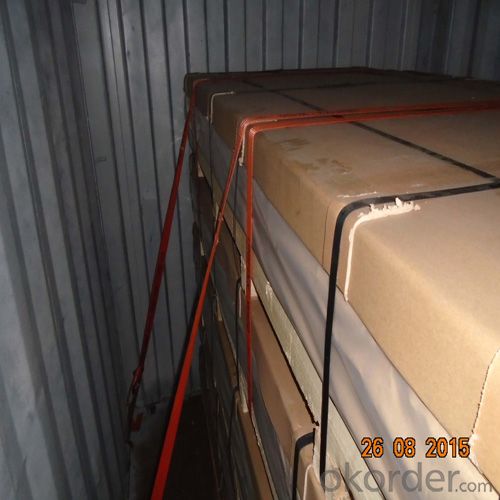
4. Rugged Construction Alloy Aluminium Specification:
Standard | GB/T3190-2008, GB/T3880-2006, ASTM B209, JIS H4000-2006 .etc |
Thickness | 0.2-200mm aluminium 5050 H38 |
Width | 1250mm 1000mm or as your requirements |
Length | 3000mm 5800mm or as your requirements |
MOQ | 5 Ton |
Package | Standard export package, by wooden box or as require |
5.FAQ
Q1.How long have you been in this product?
A1:More than 10 years.
Q2. What's the minium quantity(MOQ)?
A2. 5 Metric tons
Q3. How long is shipping time?
A3. 7 (ready-made products)-25 days(OEM)
Q4. How do you guarantee the quality?
A4. 1. Cooperating and Exchaning experience with sevral quoted aluminum companies
2. Japanese and Swiss production line and skilled works (regular training and testing)
3. more than 10 years production experience.
- Q: How many molecules are in 1 square foot of aluminum foil?
- Since aluminum foil is an amalgamation of various metals you would first need to know the full chemical breakdown in order to determine how many molecules there are in a square foot of aluminum foil. That said, if your foil was 100% aluminum, you could determine the number of AL atoms by first determining the mass of the foil and dividing by the molecular weight of AL. Multiply that by 6.022 x 10^23 to determine the number of atoms.
- Q: Can aluminum sheets be used for sound barriers?
- Yes, aluminum sheets can be used for sound barriers. Aluminum is a lightweight and durable material that can effectively block and absorb sound waves, making it an ideal choice for soundproofing applications. Aluminum sheets can be installed in various forms, such as solid panels or perforated sheets, to create effective sound barriers in residential, commercial, and industrial settings. The thickness and design of the aluminum sheets can be customized to meet specific soundproofing requirements. Additionally, aluminum is resistant to corrosion, making it suitable for outdoor applications where sound barriers may be exposed to harsh weather conditions. Overall, aluminum sheets provide a cost-effective and efficient solution for reducing noise levels and creating quieter environments.
- Q: For a high school Chemistry course I made soap for a project. Before doing this, thank god, i learned that one should never use an aluminum container to mix the lye (NaOH) and water. Now, I need to know why. I know it eats away at the container but i can't figure out why. It goes against everything I've learned so far. At first i thought it was because Aluminum was, for some strange reason :o, more reactive than Sodium therefore replacing it in the reaction but that turned out not to be true. Does anyone have an idea of why? Thanks
- Under normal circumstances, aluminum does not react with water, as an impermeable protective layer composed of aluminum hydroxide either forms within seconds or is already in place. With the addition of sodium hydroxide, the formation of a protective layer is prevented. With the production of aluminates [ Al(OH)4 ]-, the amphoteric (capable of acting as either an acid or a base) aluminum hydroxide Al(OH)3 goes in solution: 2 Al + 6 H2O -- 2 Al(OH)3 + 3 H2 Al(OH)3 + NaOH -- Na+ + [ Al(OH)4 ]- A layer of aluminum oxide previously formed by passive corrosion is dissolved by the addition of sodium hydroxide. For this reason, the reaction takes place at the beginning relatively slowly: Al2O3 + 2 NaOH + 3 H2O -- 2 Na+ + 2 [ Al(OH)4 ]- The aluminum completely dissolves and the water acts here too as an acid (for an analog, see Experiment 4.4.1). This reaction is used in drain cleaners. They are mostly made out of strong alkalis, to which alumunim or zinc has been added. The alkalis break down organic residues chemically. In addition, the formation of hydrogen leads to a bubbling effect which adds an additional mechanical cleaning mechanism. The big problem here is the formation of hydrogen gas (as well as some heat). The hydrogen gas is flammable, and if it's in a closed container, will explode
- Q: This is kind of odd, but if a volcano erupted and the lava dripped into an aluminum can, would the can melt? Would the lava harden and cool in it?
- Temperature of lava - 700 degrees Celsius. Melting point of aluminum - 660 degrees Celsius. I'll let you figure out if the can would melt...
- Q: How is aluminum obtained from its ore?
- Bayer's process is utilized to extract aluminum from its ore. The ore, referred to as bauxite, is initially crushed and combined with a heated solution of sodium hydroxide. This chemical reaction causes the aluminum oxide in the ore to dissolve, creating sodium aluminate. The impurities in the ore, like iron oxide and silica, remain insoluble. Afterwards, the solution undergoes filtration to eliminate the insoluble impurities, leaving a transparent liquid containing sodium aluminate. This liquid is subsequently cooled and exposed to carbon dioxide gas, which transforms the sodium aluminate into aluminum hydroxide. The aluminum hydroxide is then subjected to heat in order to produce alumina or aluminum oxide. This heating process, known as calcination, entails raising the temperature of the aluminum hydroxide to eliminate any remaining water and impurities. Lastly, the alumina is combined with a molten cryolite, functioning as a solvent, and then subjected to electrolysis. Electrolysis involves passing an electric current through the molten mixture, causing the migration of aluminum ions to the cathode, where they are reduced to form molten aluminum metal. The molten aluminum is subsequently collected and cooled, resulting in its solidification into ingots or other desired shapes. In conclusion, the extraction of aluminum from its ore involves the initial extraction of aluminum oxide using sodium hydroxide, followed by purification and conversion into alumina through calcination. The alumina is then subjected to electrolysis using a molten cryolite, leading to the production of molten aluminum metal.
- Q: What are the different types of finishes available for aluminum sheets?
- There are several different types of finishes that are commonly available for aluminum sheets. These finishes are applied to the surface of the aluminum to enhance its appearance, protect it from corrosion, and improve its durability. One of the most common types of finishes is the mill finish, which is the natural finish that is achieved after the aluminum has been extruded or rolled. This finish has a smooth and shiny appearance, but it is not as resistant to corrosion as some of the other finishes. Another type of finish is the brushed finish, which is achieved by brushing the surface of the aluminum with a fine abrasive material. This creates a pattern of fine lines on the surface, giving it a unique and textured appearance. Brushed finishes are commonly used in architectural applications and can also help to hide scratches and other imperfections. Anodizing is another popular finish for aluminum sheets. This process involves immersing the aluminum in an electrolytic bath and applying an electric current to it. This causes a layer of aluminum oxide to form on the surface, which provides excellent corrosion resistance and can be dyed in various colors for aesthetic purposes. Powder coating is another commonly used finish for aluminum sheets. In this process, a dry powder is sprayed onto the surface of the aluminum and then heated to form a durable coating. Powder coating is available in a wide range of colors and finishes, including matte, glossy, and textured. Finally, there is the painted finish, which involves applying a liquid paint to the surface of the aluminum. This finish offers a high level of customization, as it is available in virtually any color and can be applied in various patterns and textures. Overall, the choice of finish for aluminum sheets depends on the specific requirements of the application, such as aesthetics, corrosion resistance, and durability. Each finish offers its own unique advantages and can greatly enhance the appearance and performance of aluminum sheets.
- Q: This question asks for guidance on selecting a trustworthy supplier for purchasing aluminum sheets.
- <p>To choose a reliable supplier of aluminum sheets, consider the following: Check their reputation by reading reviews and testimonials. Ensure they have a valid certification and adhere to industry standards. Evaluate their product quality by requesting samples or visiting their production site. Assess their delivery times and reliability. Confirm they offer competitive pricing without compromising on quality. Look for suppliers with good customer service and after-sales support. Finally, consider their financial stability and ability to fulfill large orders.</p>
- Q: Can aluminum sheets be used for aircraft manufacturing?
- Indeed, aircraft manufacturing commonly utilizes aluminum sheets. This lightweight and corrosion-resistant material proves to be an excellent option for crafting diverse aircraft components. Its strength allows it to endure the pressures and tensions experienced during flight, while its malleability enables it to take on various forms and sizes. Moreover, aluminum sheets can be effortlessly joined together using diverse welding techniques, facilitating efficient and effective assembly of aircraft structures. Consequently, the utilization of aluminum sheets in aircraft manufacturing ensures a harmonious combination of strength, weight, and durability, rendering it a favored material in the aerospace sector.
- Q: Can aluminum sheets be embossed?
- Yes, aluminum sheets can be embossed. Embossing is a process that creates a raised or sunken design on a material's surface. Aluminum is a versatile material that can be easily manipulated, including being embossed. Embossing aluminum sheets can be done using various methods, such as heat embossing or using embossing tools and machines. The embossing process adds texture and dimension to the aluminum sheets, enhancing their appearance and making them suitable for various applications such as decorative purposes, signage, nameplates, or even for adding texture to automotive or architectural accents.
- Q: Are aluminum sheets suitable for decorative screens?
- Yes, aluminum sheets are suitable for decorative screens. They are lightweight, durable, and can be easily customized into various shapes and designs. Additionally, aluminum's corrosion resistance makes it suitable for both indoor and outdoor applications, making it a popular choice for decorative screens.
Send your message to us
Rugged Construction Aluminum Foil Single Sheets with Best Price
- Loading Port:
- Shanghai
- Payment Terms:
- TT OR LC
- Min Order Qty:
- 10 m.t.
- Supply Capability:
- 10000 m.t./month
OKorder Service Pledge
OKorder Financial Service
Similar products
Hot products
Hot Searches
Related keywords
